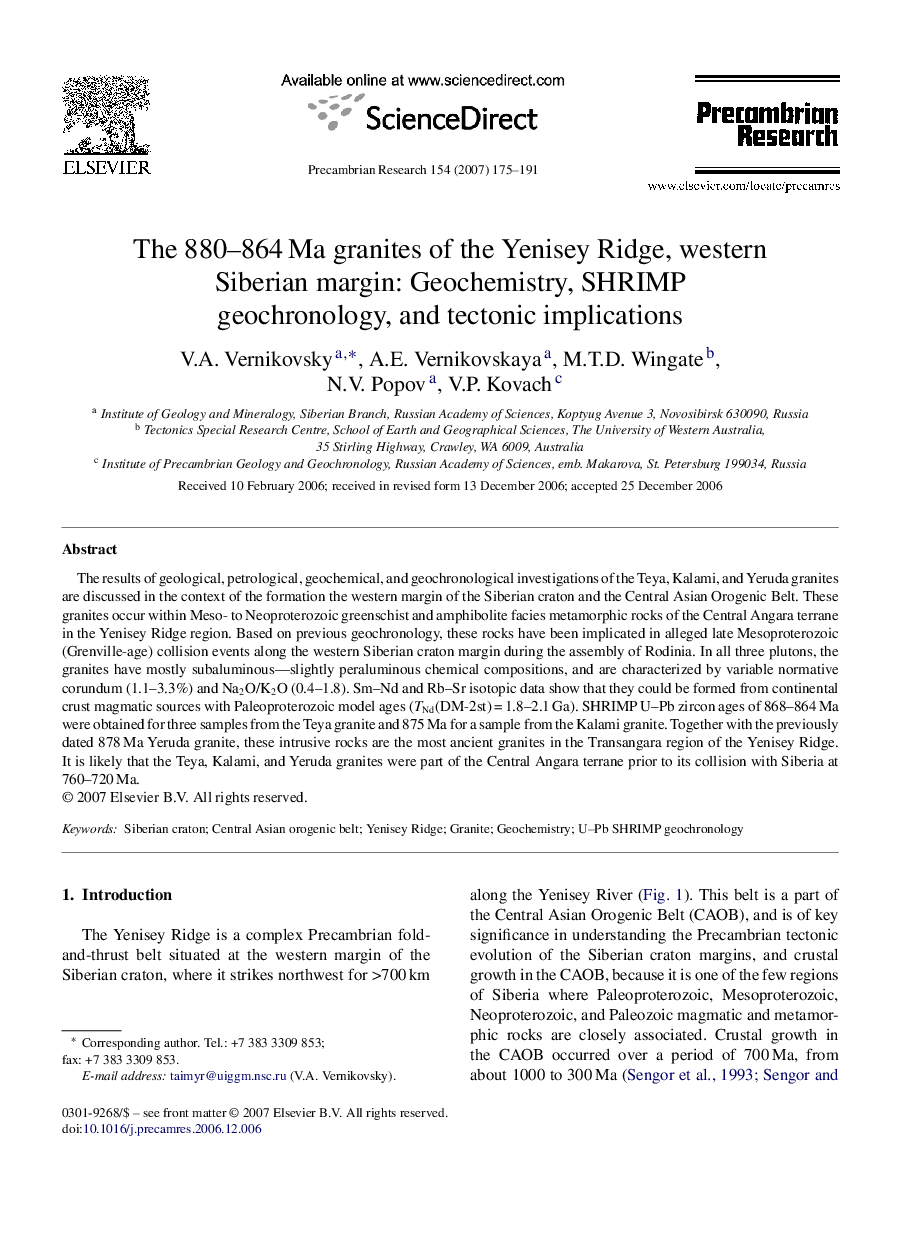| Article ID | Journal | Published Year | Pages | File Type |
|---|---|---|---|---|
| 4724538 | Precambrian Research | 2007 | 17 Pages |
The results of geological, petrological, geochemical, and geochronological investigations of the Teya, Kalami, and Yeruda granites are discussed in the context of the formation the western margin of the Siberian craton and the Central Asian Orogenic Belt. These granites occur within Meso- to Neoproterozoic greenschist and amphibolite facies metamorphic rocks of the Central Angara terrane in the Yenisey Ridge region. Based on previous geochronology, these rocks have been implicated in alleged late Mesoproterozoic (Grenville-age) collision events along the western Siberian craton margin during the assembly of Rodinia. In all three plutons, the granites have mostly subaluminous—slightly peraluminous chemical compositions, and are characterized by variable normative corundum (1.1–3.3%) and Na2O/K2O (0.4–1.8). Sm–Nd and Rb–Sr isotopic data show that they could be formed from continental crust magmatic sources with Paleoproterozoic model ages (TNd(DM-2st) = 1.8–2.1 Ga). SHRIMP U–Pb zircon ages of 868–864 Ma were obtained for three samples from the Teya granite and 875 Ma for a sample from the Kalami granite. Together with the previously dated 878 Ma Yeruda granite, these intrusive rocks are the most ancient granites in the Transangara region of the Yenisey Ridge. It is likely that the Teya, Kalami, and Yeruda granites were part of the Central Angara terrane prior to its collision with Siberia at 760–720 Ma.
